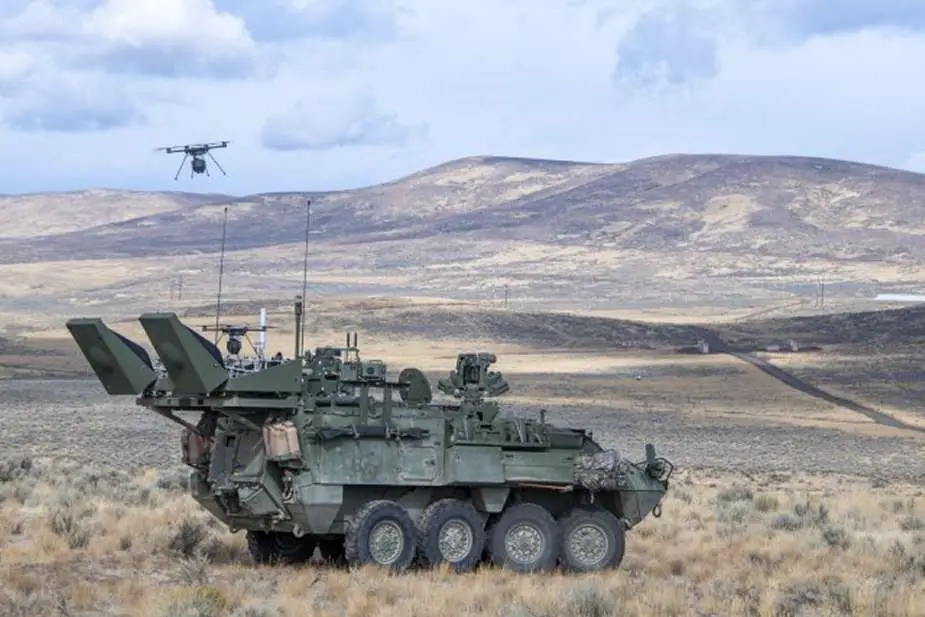Breaking news
US Army tests new Stryker M1135 version for CBRN surveillance.
Troops based at Joint Base Lewis-McChord are at the forefront of testing the new Sensor Suite Upgrade (SSU) for the M1135 version of the Stryker combat vehicle.
Follow Army Recognition on Google News at this link

The dedicated system of CBRN detection on a Stryker vehicle can locate, identify, and report NBC contamination to commanders (Picture source: US DoD )
According to an Army announcement, published on 20 October 2023, soldiers from the 1st Stryker Combat Brigade of the 2nd Infantry Division, along with the 110th Chemical, Biological, Radiological, and Nuclear (CBRN) Battalion, are collaborating with test operators from the U.S. Army Operational Test Command at West Fort Cavazos, Texas. Their focus is on the Stryker Nuclear, Biological, and Chemical Reconnaissance Vehicle SSU.
The SSU plays a crucial role in increasing troop's recce capabilities by conducting Nuclear, Biological, and Chemical (NBC) reconnaissance missions in combat zones. With its CBRN detection technology integrated into a Stryker unit, it is designed to quickly locate, classify, and inform command elements about NBC contaminants.
Lieutenant Kassi Gulliford, who leads the RECCE Platoon in the Headquarters and Headquarters Company, 23rd Brigade Engineer Battalion, emphasized the importance of this evaluation. She stated that the trial provides her team with a specialized setting to focus on critical combat-related tasks, such as mounted CBRN observation and monitoring. Direct experience with CBRN simulants is vital in boosting their confidence and combat readiness as a mounted RECCE platoon.
Joseph Scheerer, the testing officer from the U.S. Army Operational Test Command's Maneuver Support and Sustainment Test Directorate, highlighted the value of the gathered test data and participant feedback. This information is crucial for informing senior Army officials about the SSU's effectiveness, suitability, and reliability.
Throughout the four-day evaluation, the teams put the sensors through rigorous trials to identify and categorize CBRN hazards, generate comprehensive alerts and assessments, and perform decontamination on 16 distinct objectives. Scheerer emphasized that the complexities involved in mounted CBRN reconnaissance and surveillance require reliable systems operated by specialized CBRN personnel.
The testing event is designed to ensure that the improved systems meet the required capabilities in the conditions where soldiers train and fight.


























